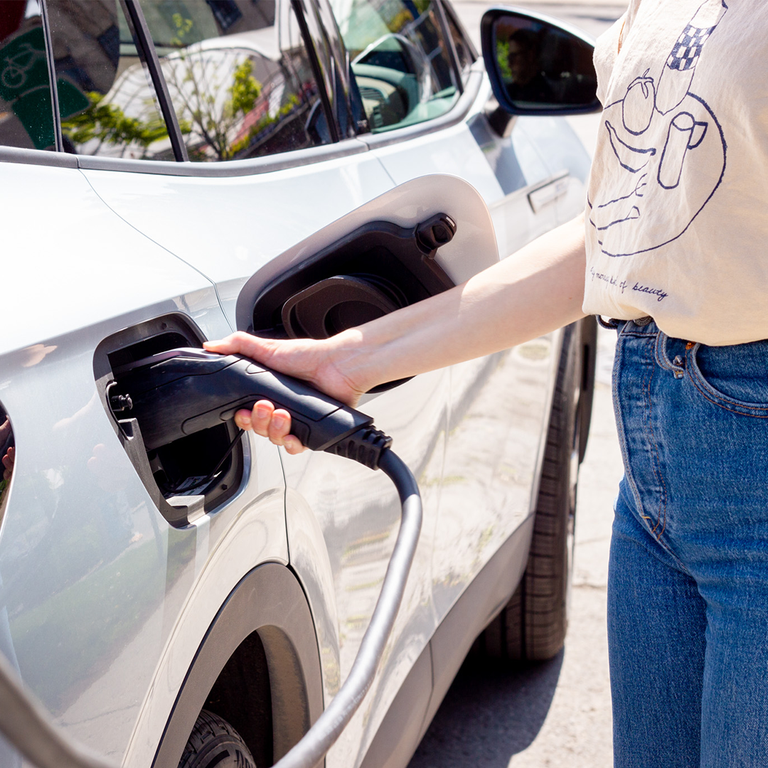
The Many Lives of an Electric Vehicle Battery
11 April 2024
At the heart of an electric vehicle is the well-known lithium-ion battery which allows EV drivers to do without the internal combustion engine. This type of battery is generally guaranteed for 8 years by the manufacturer but has an impressive lifespan of 10 to 15 years, or up to 500,000 km in many cases. In fact, a recent report by Clean Energy Canada indicates that out of 15,000 EVs studied, only 1.5% required battery replacement, and most were under warranty.
In Québec, these batteries are powered by electricity generated from 99.7% renewable sources that emit no greenhouse gases. The battery manufacturing process is also increasingly efficient and emits fewer GHGs. Even so, it remains crucial to recycle these batteries at the end of their life cycle, for both environmental and economic reasons. The recovery of minerals such as lithium and cobalt reduces both their environmental impact and the cost of their extraction.
In March 2023, Québec's Minister of the Environment, the Fight against Climate Change, Wildlife and Parks, Benoit Charette, indicated his desire to formalize a draft by-law in the near future, making it mandatory for manufacturers to recycle batteries and recover critical minerals. This would be a very real and viable alternative to local mineral extraction. In addition, automakers have set up the EV Battery Recovery program that is offered free of charge to EV drivers.
Reconditioning options
At the end of an EV's life cycle, the battery will not be sent to the scrap dealer. In fact, there is a hierarchy of recycling options. At the top of the list, a battery will first be reconditioned for reuse in an electric vehicle. Next, the battery is reused for other purposes. Finally, the battery is dismantled to recover and recycle its metals.
A new kind of generator
One way to recycle a battery is to rethink the use of the battery itself. As we have seen, at the end of an EV's useful life, the battery itself can be reconditioned. When the performance of an EV battery no longer meets the requirements for powering a vehicle, this energy storage can meet other energy needs. For example, an electric car battery can be transformed into a generator when it has reached the end of its initial useful life. This is what Nissan does with the batteries in its Leaf models, transforming them into portable power source for any electronic object, or as emergency backup power in the event of a power failure.
A revolutionary recycling technology
Once the options described above have been exhausted, the battery's metals can be extracted and recycled. Québec-based Lithion Technologies is already leading the way in this promising field, having developed an innovative process that recycles 95% of a battery's materials using hydrometallurgy. Thanks to this approach, coveted recovered minerals such as lithium, nickel, manganese and cobalt, among others, can be reintegrated into new batteries without altering their performance. This process can be carried out repeatedly, which means that the minerals in a battery could be recycled endlessly thanks to this new technology developed in Québec.
With the exponential growth in the electrification of transportation, it is reassuring to see that the field of battery recycling is also booming. The stakes are as high for the environment as they are for the economy, with vehicles that have less impact on the planet and are more affordable.